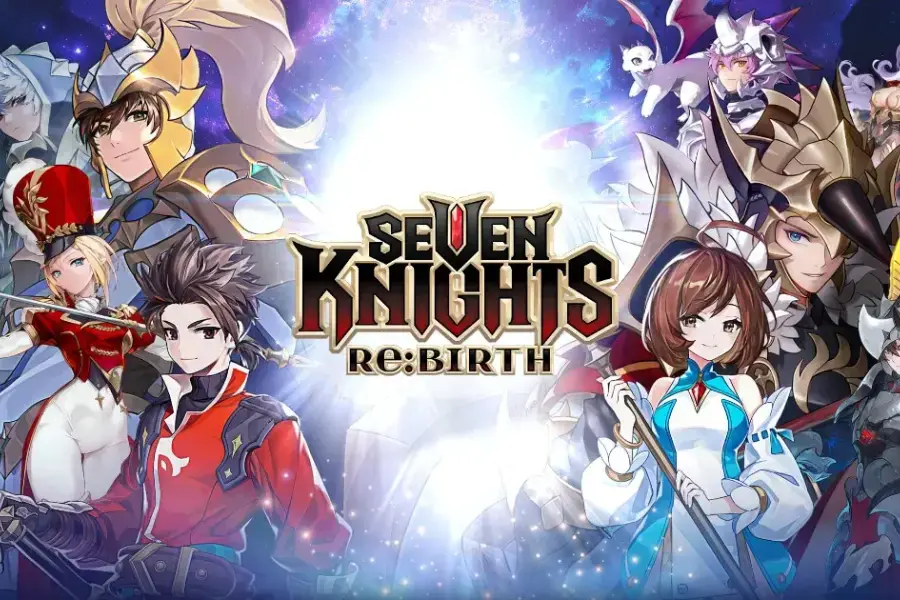Seven Knights Re:BIRTH Ruby Farming Guide and Tips

Rubies are one of the most essential currencies in Seven Knights Re:BIRTH, fueling everything from hero upgrades to key purchases. Knowing how to efficiently farm rubies can dramatically speed up your account progression. This guide breaks down the key concepts of ruby farming: from understanding keys and fodder leveling to free-to-play (F2P) versus light spender differences, milestone farming areas, event stages, nightmare farming, and fodder management.
Understanding Ruby Farming Basics
In Seven Knights Re:BIRTH, rubies are primarily earned by leveling heroes, often referred to as “fodders.” Every time you level a hero from level 1 to 30, you’re rewarded with 20 rubies, which must be manually claimed from the Missions Tab. Unlike the original version of the game, adventure maps in Re:BIRTH no longer specialize in unique drops for each area. Instead, the main focus of farming is rubies and gold, while hero experience increases as you progress through higher-level adventure stages. This new system places much greater importance on efficiently managing your keys and leveling fodders as quickly as possible.

Keys are the Core Resource when Ruby Farming
Keys are the lifeblood of farming in Seven Knights Re:BIRTH. Every adventure run costs 6 keys, so your ability to earn rubies depends entirely on how many keys you can generate and how efficiently you spend them. The faster you level fodders with fewer keys, the more rubies you’ll accumulate. Free-to-play players receive 1 key every 3 minutes, which adds up to about 480 keys per day. Light spenders who purchase the Power-Up Subscription Pack shorten the regeneration time to 2 minutes, allowing them to earn about 720 keys per day.

In addition to natural regeneration, players can claim 60 keys daily from Guild Check-In (if 25 or more members participate), 60 keys from Daily Missions, and another 60 keys from Alys’s Shop (free version). There are also weekly key bundles available in both the Honor and Guild Exchange Shops that provide an additional 420 keys per week, averaging about 60 keys per day. This puts the total at roughly 780 keys per day for F2P players and 1,100 keys per day for light spenders, even before counting event rewards from expeditions, raids, or castle rush milestones.
Farm Rubies in Adventure Mode Stages
Certain adventure stages serve as key milestones in improving your farming efficiency. The most important zones to aim for are Area 8, Area 11, and Area 14. These stages dramatically reduce the number of runs needed to level fodders. Players should push to Area 14 as soon as possible, as it provides the best balance between experience, gold, and stability. When farming within these milestone areas, it’s best to focus on the first map of each zone (such as 8-1, 11-1, or 14-1).

These maps consist of only two phases, making them more reliable and key-efficient. After reaching Area 14, you can consider Area 15 for higher gold per run, but the experience remains the same. If your team isn’t stable in Area 15, stick to 14-1 to avoid wasting keys on failed runs. Nightmare stages are considered the gold standard of farming for experienced players. Each run costs 12 keys but counts as two rounds, allowing you to level 8 fodders at once using two teams. The experience per key is comparable to Area 15, but the gold and fodder drops are far superior.
Farm Rubies in Event Stages
Event stages are special opportunities that appear periodically. They offer fixed amounts of experience, such as 1,250 EXP per stage, which allows you to level fodders to 30 in exactly 10 runs. However, event stages do not drop fodders, so you’ll need to stockpile enough before farming there.
For F2P players, event stages can still be profitable when combined with key bundle purchases, but your team needs to be strong enough to run 4 fodders alongside your main farmer. If your team can only handle 3 fodders, your ruby profit will drop significantly, so it’s best to test your setup before committing your keys.
Maximizing Key Usage with Alys’s Shop Bundles
Rubies can also be reinvested into key bundles from Alys’s Shop, which dramatically increases your farming potential. There are two main packages available:
- Package A: 20 chests for 50 rubies, totaling 1,200 keys.
- Package B: 50 chests for 80 rubies, totaling 3,000 keys.
The profitability of these bundles depends on how far you’ve progressed in the adventure. In most cases, Package A offers a clear net profit once you’ve reached more efficient farming stages, while Package B requires stronger progression to be worthwhile. By purchasing these bundles strategically, you can create a self-sustaining cycle of farming: use rubies to buy keys, use keys to level fodders, and claim more rubies from missions.
F2P vs Light Spender Efficiency Comparison for Ruby Farming
Light spenders enjoy several advantages over F2P players beyond just faster key regeneration. The Power-Up Subscription Pack also grants a 10% bonus to hero experience, which can shave off one run per fodder when leveling. This means light spenders can level more fodders with the same number of keys, producing significantly more rubies per day.

For F2P players, the maximum theoretical ruby profit from free keys alone is about 880 rubies per day, whereas light spenders can push up to 1,440 rubies per day. In practice, not all keys will go to farming rubies because players also need to spend keys on raids, tower climbs, and other content. Still, the difference in efficiency is clear as light spenders can scale their ruby farming much faster due to the extra keys and experience bonuses.
Players can enjoy playing Seven Knights Re:BIRTH on a bigger screen of their PC or Laptop via BlueStacks along with your keyboard and mouse.
Keep progressing in Seven Knights Re:BIRTH with our other in-depth guides.
















